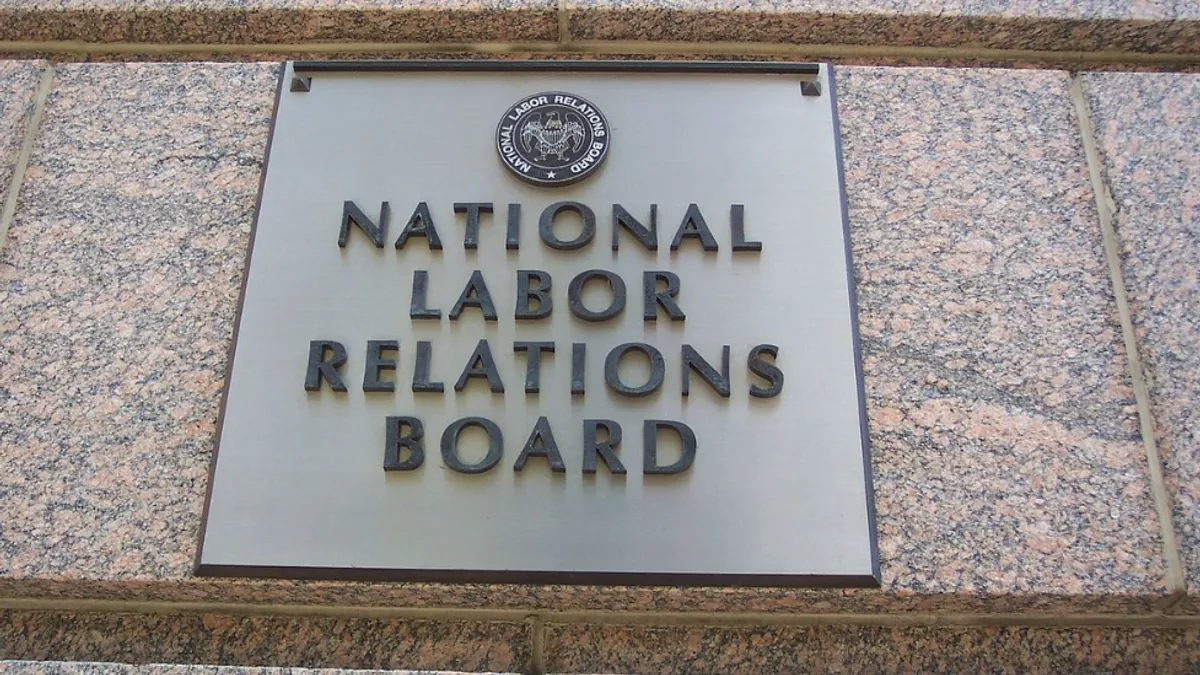The regulatory battle over the National Labor Relations Board’s framework for determining when an entity is considered a joint employer entered its latest phase Thursday, but the story is far from over.
NLRB announced its joint employer final rule more than one year after the agency first proposed revisiting its framework for analyzing joint employer relationships. The board’s Democratic majority revived the Browning-Ferris Industries framework originally described in 2015 under the Obama-era board.
In a nutshell, NLRB will consider entities to be joint employers of another employer’s employees if the two share or codetermine essential terms and conditions of employment. Moreover, joint employers may possess or exercise direct, or indirect, control over those terms and conditions, which include aspects such as compensation, scheduling, supervision and discharge.
Employers have had some time to prepare for the possibility the NLRB would revisit joint employer regulations, leading to a “muted” reaction from some, said Steve Swirsky, member of the firm at Epstein Becker Green.
But the larger concern, he said, is how the standard set forth in the final rule applies to employers that may have some control over essential employment terms and conditions over another employer’s workers but don’t necessarily exercise that control.
“The burden, I think, will be on those employers to say ‘No, we’re not [exercising control],’ and the premise is that it doesn’t matter whether you’ve ever exercised that kind of control,” Swirsky said.
If an employer is found to be a joint employer under the NLRB’s framework, it would need to bargain with employees unions — where applicable — with respect to any terms and conditions of employment that it possesses the authority to control or exercises the power to control, Emily P. Harbison, partner at Reed Smith, told HR Dive in an email.
Such employers also may be liable for unfair labor practices committed by the other employer, and they could be subject to union picketing or boycotts if there is a labor dispute, Harbison added.
Franchisors are one commonly cited employer segment in joint employer litigation, and the NLRB specifically noted a number of public comments submitted in response to the proposed rule that argued the rule would slow the growth of franchise businesses.
While NLRB said it is “sensitive” to those concerns, it noted that franchisors may see positive impacts including improved operation and worker safety at their businesses. NLRB also cited statutory considerations, stating that it “must adhere to common-law agency principles” and that “commenters have failed to explain how, consistent with the [National Labor Relations Act]’s requirements and statutory policy, the Board could treat their concerns as determinative.”
But the rule could have wide-ranging implications for a number of industries, according to Swirsky. For example, healthcare institutions could have functions performed by workers who are not their own employees. Swirksy said the new framework could apply to many similar vendor and contractor relationships.
“If you carry it to its illogical conclusion, which the board may intend to, a lot of things would fall under this joint employer standard that I don’t think any of us would think of as a joint employer relationship,” he continued. “It really is unleashing a storm.”
As with other federal regulatory efforts, litigation challenging the rule is likely to be filed in the near future. Business groups were quick to call for such opposition Thursday; the International Franchise Association said in a press release that it “vowed to stop the rule through any measure available, including through a legal challenge and urging lawmakers for greater oversight of the agency.”
Swirsky said he expects to see legal filings within the next week. Yet, employers should not ignore the final rule in anticipation that it will be held up by the courts, he noted.
“You need to look at how these relationships are structured, how they’re documented and how they’re carried out in the workplace,” Swirsky said.














